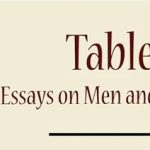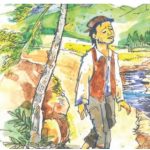Introduction and Background: – Metcalfe has some saviour complex and seems to be an aesthetic. The story is a sharp, satirical look at the English society, particularly at the upper class during a critical and significant changing period. It also deals with the disadvantages of scientific development and the industrialization that soaked the properties and the natural elements of village or countryside. It gives an iconic commentary on the perception of wealth and the supposed idyllic life of English village due to the agricultural and natural wealth of England. There is also a sense of romanticization of English villages from the perspective of a foreigner. The narrative evokes the traditional picturesque image of rural England. And the narrator considered the outsider as Alien which is the key ironic element who provides villagers with various amenities. The story deals with the metaphor of soil where it suggests that the wealth rather than being ostentatious, is absorbed into the very fabric of rural life enriching the community in a more subtle way. To understand the story, we first have to decode the culture of a native village and here Waugh wants us to focus on the real strength of a town that lies in its village. The scientific experiment during the early 20th century sown the seeds of war which has also been discussed in the story. Here “killing the root” expresses the exploitations of rural phenomena and scientific involvements.
The character of Bogget: – He functions as the representation of the rural English working class who have the practical knowledge on working on land and acts as the social dynamic of rural livelihood. The character portrays the abolition of gardener culture. Moreover, the generational gap, movement towards city for employment are also discussed through the character of Bogget. It is not the incapability of his practical knowledge but the romantic idea of Metcalfe due to the development of mechanical products in agriculture that shows the broader societal shift and the differences in perspective on rural life.
The Much Malcock Hall: – The name of the fictional village sounds humorous and similar “Male cock” which is vulgar and a reference to male genitalia. Therefore, the name is deliberately suggestive and has obscene undertone. Otherwise, the village denotes the satire of rural idyllists and the romanticized view of English village. It symbolises hidden wealth of natural elements in a village along with its agricultural products, represented as the real wealth of England, resides in contrast to superficial displays of London’s wealth. Essentially the village is a tool of Waugh to criticize English society.
Conclusion: – Waugh is known for his dark humour, satirical wit and the social commentary on the themes of social class and the tradition. He subverts the notion of security of English Home revealing the fragility of the protagonist’s perceived views. Waugh delves into the behavioural qualities of upper class and shows the clash between the traditional value and the modernity. He also exposes the underlined tensions of the inner thought of the characters. Thus, it is a snapshot of upper middle class English life in the early 20th century that reveals the certain anxieties and underlined dissatisfactions that exist beneath a seemingly tranquil surface. So, Waugh establishes the philosophy of how we see instead of what we see.
Aman Pal
Literatureman


